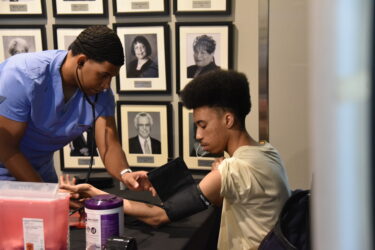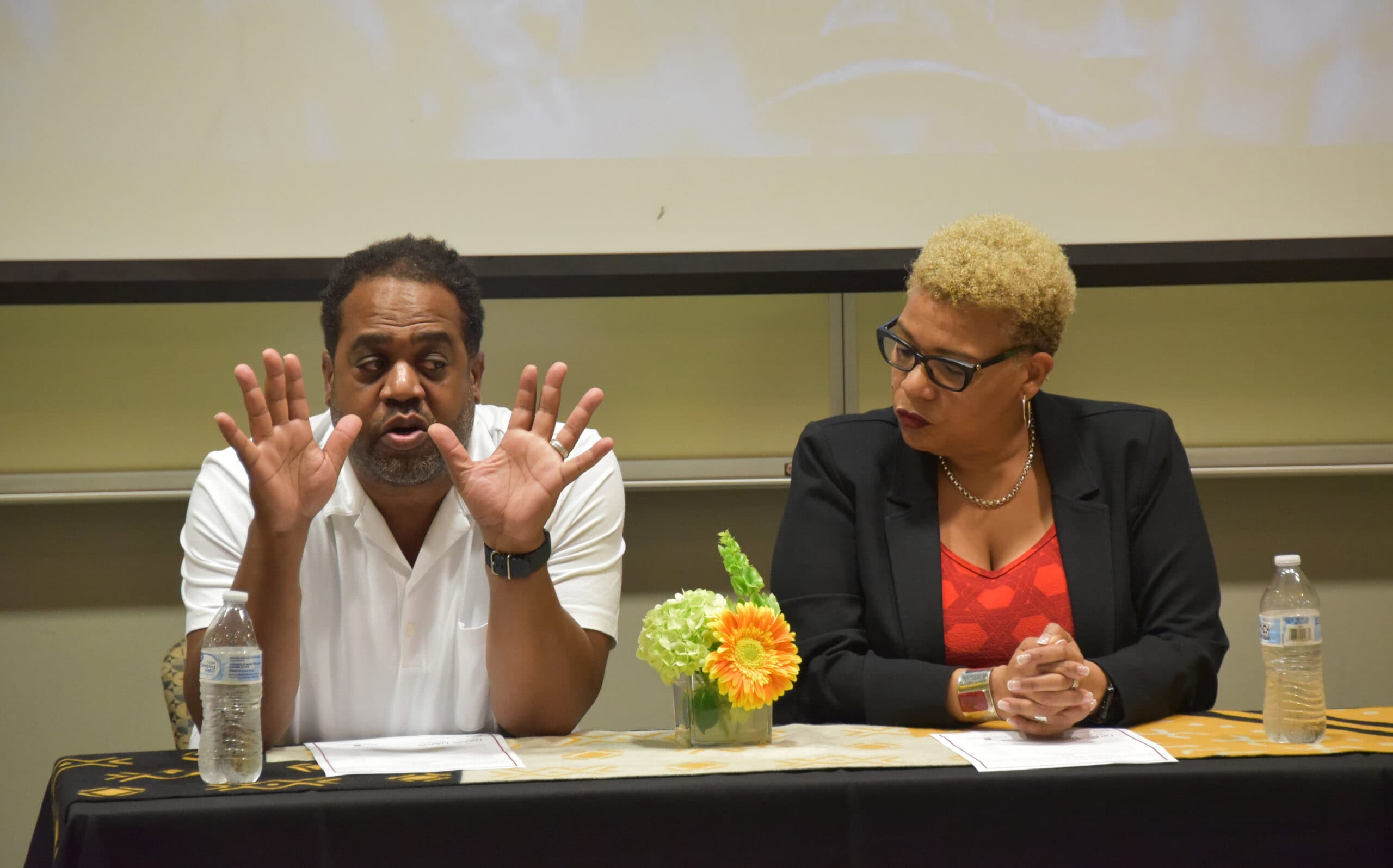UAMS Organizes Forum on Violence, Trauma Among Black Men
| The University of Arkansas for Medical Sciences (UAMS) convened health professionals and community members for a Sept. 21 event that focused on the issues of structural violence, community violence and trauma among Black men.
The Public Health Summit, held on the campus of Philander Smith University in Little Rock, explored those health challenges as well as ideas for innovative solutions.
Little Rock Mayor Frank Scott Jr. opened the event by describing the connection between public health and community violence. Scott said cities across the nation experienced an uptick in crime as the COVID-19 pandemic exacted a toll not only on those with mental illness but also on youths and young adults.

Little Rock Mayor Frank Scott Jr. speaks about the connection between public health and community violence.
That problem forced the city to take an innovative approach to reducing community violence and crime, the mayor said. He noted that UAMS has been a key partner on crisis intervention efforts in the wake of shootings, with specialists who can assess the wounded and work with them to ensure that the initial crime doesn’t create a cycle of retaliation and violence.
“I want to challenge everyone here today to play a role in how we continue to reduce crime,” he told attendees. “We need all the innovators in place — not only the traditional crime analysts but also our public health experts.”
The Public Health Summit was organized by the UAMS Division for Academic Pathways and Workforce Partnerships in collaboration with the UAMS Fay W. Boozman College of Public Health, Philander Smith University and the Urban League of Arkansas. The event featured a pair of guest speakers whose research sheds light on the toll that violence inflicts on victims and on their loved ones.
Joseph Richardson, Ph.D., MPower professor of African American studies, medical anthropology and epidemiology at the University of Maryland, gave a keynote presentation on the topic of gun violence as a public health crisis.
“This has been going on for well over 30 years, that the leading cause of death among Black men persistently has been gun violence,” he said.
Richardson showed the audience a series of videos he produced through the Capital Region Violence Intervention Program, an initiative that he co-founded in Prince George’s County, Maryland. The videos featured young men who were injured in violent encounters and who were willing to share details about traumatic stress and their approach to healing.
Many of the men whom Richardson worked with had lost trust not only in criminal justice and health care institutions but also in their friends and family members. He said some of them needed help processing traumatic experiences that dated all the way back to childhood.
Richardson said the health care system can have a vital role in facilitating this healing, but hospitals have the resources to work with only a small fraction of the people who need their help.
“We have hundreds of Level 1 and Level 2 trauma centers across the country, but we do not have enough hospital violence intervention programs to serve everyone who comes into our emergency rooms,” he said.
Tanya L. Sharpe, Ph.D., associate professor and Factor-Inwentash Chair in Social Work in the Global Community at the University of Toronto, spoke about the ways that people handle grief and trauma in the aftermath of homicides. She noted that Black Americans make up about 14% of the United States’ population but account for more than half of its homicide victims.
“We are dealing with an epidemic that disproportionately affects some of the most vulnerable people,” she said.

A student from Philander Smith University has his blood pressure checked at the Public Health Summit. UAMS preceptors and students offered a variety of screenings and health resources for the attendees.
Sharpe described some of the ways that people cope with the loss of a loved one, such as maintaining a connection to the deceased through tattoos or decals. Her research also showed the importance of collective coping in the Black community, with families coming together during times of stress or trauma.
However, Sharpe found that collective coping is usually driven by one or two family members who provide emotional or monetary support for the entire group.
“Who’s caring for those primary caregivers?” she asked.
Sharpe’s findings led her to establish the Center for Research & Innovation for Black Survivors of Homicide Victims, a research organization that advances ideas and policies for community groups that work with grieving families. The organization has more than 60 faculty affiliates in the U.S. and Canada, providing expertise in areas such as public health, social work and data science.
“When you consider all the services that Black survivors need and rely upon, it takes us all to engage in these interventions,” she said.
The Public Health Summit concluded with a question-and-answer session for the two experts. Outside the auditorium, UAMS preceptors and students offered a variety of health resources for the attendees, including screenings for blood pressure, glucose, cholesterol, oxygen saturation, temperature and body mass index.
Brian Gittens, Ed.D., MPA, vice chancellor of the Division for Academic Pathways and Workforce Partnerships, said the event provided a forum for government and community leaders to discuss important issues that need to be addressed. In addition to being a public health issue, violent crime serves as a barrier to educational and economic success, he said.
“Only by bringing people together in the same room can we hope to solve these sticky problems,” Gittens said.
